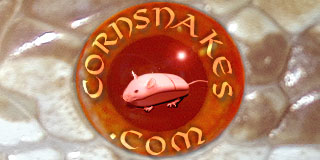Gregg
Ancient Elder
Dear Rich, Kathy, Serpwidgets, et al....
Morning Tea time: and I'm in front of my computer, again. Faced with a day full of work, but I choose instead to get a grip on this issue of genetics. Anything to postpone the inevitable.
I am aware of the myriad problems my approach might have when actually applied to the nature of genes and genetic influences/variables/trips/falls/attractions/and so forth; but all I'm after is a clearer understanding of this "1 in 4, 27 in 64, 3 in 16" sort of thing.
I'm using as my example two snakes I got from Kathy recently: 1.1 Normals, het. for amel/lav/motley. Right, triple hets. We're going to be up in the $64,000.00 question area.
According to Mick's CPP, I should get .... Well, you know.
So, what I did was cut out 64, 1/2" x 3/4" pieces of paper and made sure that I had 27 marked N; 9 others were marked L; 9 more were marked A, and 9 more were marked Mot. 3 pieces of paper were marked L/mot; 3 more were marked A/Lav, and 3 more were marked A/Mot. Lastly, 1 piece of paper was marked A/Lav/Mot. I then put all of these little bits of paper into a box with a lid. (I'm sure the world of genetic scrambling is far more vast and complicated, but for my purposes, my gene scrambler was 4-7/8" square and 2-1/2" deep cardboard lavender bath soap box with a lid.)
Okay, all the paper bits are in the box. I shake. Open the lid and draw out a piece without looking. It's an A--for amelanistic. Now, I put that piece of paper back into the box. Shake. Draw. This time I get Mot. I put that piece back into the box. (My understanding is that what is drawn never leaves the realm of possibilities, right?)
I repeat this proceedure six more times--a total of 8 draws in all.
Why 8? It's based on the assumption that I have had the perfect clutch of 16 eggs. However, for various reasons, half have died before three months have passed--I don't know; I've never had a snake that laid eggs, so I couldn't tell you how close I am to real Life. I did this "experiement" twice--too much work to do besides this, but hey....
Here are my results.
1st Run:
1) A
2) Mot
3) N
4) Mot
5) N
6) L/Mot
7) Mot
8) A
2nd Run:
1) A
2) N
3) A/Lav
4) L
5) N
6) A/Mot
7) Mot
8) Mot
Now, my question to you all is this: Am I way off base with this approach? Or am I close to understanding the 27/64, 1/4, 3/16 genetic possibility statements I see?
Morning Tea time: and I'm in front of my computer, again. Faced with a day full of work, but I choose instead to get a grip on this issue of genetics. Anything to postpone the inevitable.
I am aware of the myriad problems my approach might have when actually applied to the nature of genes and genetic influences/variables/trips/falls/attractions/and so forth; but all I'm after is a clearer understanding of this "1 in 4, 27 in 64, 3 in 16" sort of thing.
I'm using as my example two snakes I got from Kathy recently: 1.1 Normals, het. for amel/lav/motley. Right, triple hets. We're going to be up in the $64,000.00 question area.
According to Mick's CPP, I should get .... Well, you know.
So, what I did was cut out 64, 1/2" x 3/4" pieces of paper and made sure that I had 27 marked N; 9 others were marked L; 9 more were marked A, and 9 more were marked Mot. 3 pieces of paper were marked L/mot; 3 more were marked A/Lav, and 3 more were marked A/Mot. Lastly, 1 piece of paper was marked A/Lav/Mot. I then put all of these little bits of paper into a box with a lid. (I'm sure the world of genetic scrambling is far more vast and complicated, but for my purposes, my gene scrambler was 4-7/8" square and 2-1/2" deep cardboard lavender bath soap box with a lid.)
Okay, all the paper bits are in the box. I shake. Open the lid and draw out a piece without looking. It's an A--for amelanistic. Now, I put that piece of paper back into the box. Shake. Draw. This time I get Mot. I put that piece back into the box. (My understanding is that what is drawn never leaves the realm of possibilities, right?)
I repeat this proceedure six more times--a total of 8 draws in all.
Why 8? It's based on the assumption that I have had the perfect clutch of 16 eggs. However, for various reasons, half have died before three months have passed--I don't know; I've never had a snake that laid eggs, so I couldn't tell you how close I am to real Life. I did this "experiement" twice--too much work to do besides this, but hey....
Here are my results.
1st Run:
1) A
2) Mot
3) N
4) Mot
5) N
6) L/Mot
7) Mot
8) A
2nd Run:
1) A
2) N
3) A/Lav
4) L
5) N
6) A/Mot
7) Mot
8) Mot
Now, my question to you all is this: Am I way off base with this approach? Or am I close to understanding the 27/64, 1/4, 3/16 genetic possibility statements I see?
